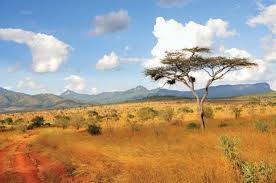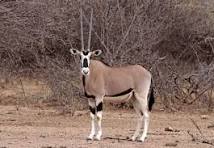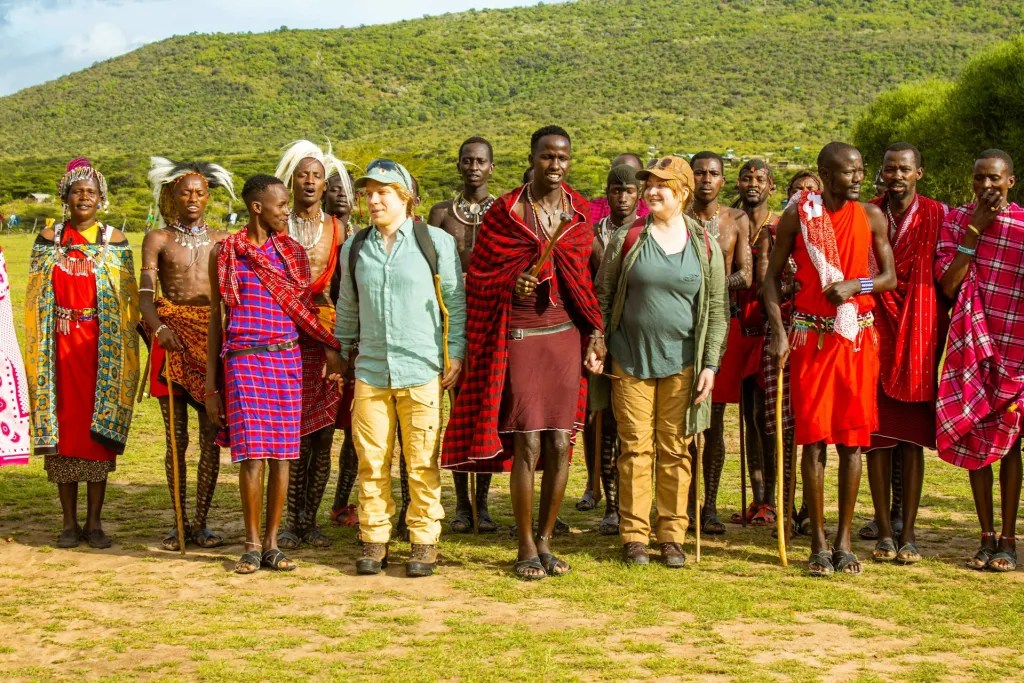Sibiloi Natonal Park
Located in the far northeastern corner of Kenya, Sibiloi National Park is one of the country’s most remote and least visited parks. This vast, arid landscape, part of the Lake Turkana Basin, is a land of stark beauty and rich history. Known as the “Cradle of Mankind,” Sibiloi is a haven for desert-adapted wildlife and a significant site for paleontological research. Its isolation has helped preserve its pristine condition, offering a rare glimpse into ancient and contemporary natural wonders. The park’s rugged terrain, featuring volcanic hills, fossil beds, and the shimmering waters of Lake Turkana, creates a dramatic backdrop for exploration. Sibiloi’s unique setting provides an opportunity to witness a different side of Kenya, far removed from the more frequented parks. The park’s significance extends beyond its wildlife, as it plays a crucial role in understanding human evolution and prehistoric life, thanks to the ongoing research conducted by scientists worldwide. Sibiloi National Park is a testament to Kenya’s diverse natural heritage and its importance in human history and conservation.

History and Background
Sibiloi National Park was established in 1973, covering approximately 1,600 square kilometers of rugged terrain. The park is part of the Lake Turkana Basin, renowned for its fossil-rich deposits that have yielded some of the most significant discoveries in human prehistory. The area around Lake Turkana, once known as Lake Rudolf, has been a crucial site for paleontologists, including the renowned Richard Leakey and his team, who have uncovered fossils dating back millions of years. These discoveries have provided invaluable insights into the early stages of human evolution. Volcanic activity shapes Sibiloi’s landscape, with features such as the Sibiloi Volcano and the Koobi Fora Formation contributing to its geological and paleontological significance. The park’s remote location and challenging conditions have helped preserve its ancient fossil beds, making it a key site for ongoing research. Despite its scientific importance, Sibiloi remains relatively unknown to many travelers, offering a unique and unspoiled destination for those willing to venture into its remote expanses.
Flora and Fauna
Sibiloi National Park’s flora and fauna are adapted to its harsh, arid environment. The park’s vegetation is sparse, with hardy plants such as acacias and desert grasses being the dominant species. The area around Lake Turkana supports a more diverse range of plant life, including the water-loving papyrus and sedges. This contrast between the arid interior and the lush lake shores creates varied habitats that support different wildlife. Despite its dry conditions, Sibiloi is home to several species of wildlife adapted to desert life. The park’s mammalian inhabitants include the Beisa oryx, Grant’s gazelle, and the elusive gerenuk, known for its long neck that allows it to reach high branches for feeding. Sibiloi supports a population of desert-adapted elephants that roams the park in search of scarce water sources. Bird life in Sibiloi is equally diverse, with species such as the ostrich, secretary bird, and various waterfowl found around the lake. The park’s unique environment also provides a habitat for the Nile crocodile, which can be spotted in the waters of Lake Turkana. This combination of dry land and aquatic ecosystems makes Sibiloi a fascinating destination for wildlife enthusiasts and researchers alike.

Activities and Attractions
Sibiloi National Park offers a range of activities that highlight its unique features and remote beauty. The park’s primary attraction is its fossil sites, where visitors can see the remnants of prehistoric life that have shaped our understanding of human evolution. Guided tours of the Koobi Fora Formation provide insights into the significant discoveries made in the area and the ongoing research efforts. For those interested in wildlife, game drives offer opportunities to observe the park’s desert-adapted animals in their natural habitat. Early morning and late afternoon are the best times for wildlife viewing, as animals are more active during these cooler periods. Birdwatching is another popular activity, particularly around Lake Turkana, where the diverse bird species provide excellent opportunities for spotting and photographing rare and interesting birds. The lake is a major attraction, offering a serene and picturesque setting for relaxation and exploration. Fishing and boat trips on Lake Turkana allow visitors to experience its vast waters and enjoy its scenic beauty. Its remote location makes it essential to plan visits carefully and be prepared for the park’s challenging conditions, including high temperatures and limited facilities.
Accommodation
Accommodation in Sibiloi National Park is limited, reflecting its remote and undeveloped status. The park does not have large-scale lodges or hotels, so visitors need to plan their stay carefully. The main option within the park is the Sibiloi National Park campsite, which offers basic facilities for those who prefer to camp under the stars. This campsite provides a more immersive experience, allowing guests to enjoy the natural surroundings and the park’s unique atmosphere. Visitors can also stay in nearby towns such as Loiyangalani, where a few lodges and guesthouses offer more comfortable amenities. These accommodations provide a base for exploring the park and can be reached by road from Sibiloi. Staying in Loiyangalani offers the chance to experience local culture and enjoy the hospitality of the area’s residents. It is advisable to arrangements in advance, as accommodations can be limited, especially during peak travel seasons.
Cultural Connections
The Samburu and Turkana communities, who have adapted to the harsh desert environment over generations, inhabit the area surrounding Sibiloi National Park. These communities have a deep connection to the land and its wildlife, with traditional practices and knowledge which contribute to conservation. Visitors to Sibiloi engage with these communities, learning about their way of life, traditional customs, and the challenges they face in the modern world. Cultural visits to local villages provide insights into the daily lives of the Samburu and Turkana people, and their interactions with the natural environment. These interactions enhance the travel experience, support the local economy, and promote cultural preservation. By participating in these cultural exchanges, visitors gain a greater appreciation for the complexities of life in this remote region and the efforts being made to balance tradition with conservation.

Conservation Efforts
Conservation in Sibiloi National Park is a crucial aspect of its management, given its significance as both a wildlife reserve and a paleontological site. Efforts are focused on protecting the unique ecosystems and fossil sites from potential threats, including illegal activities and climate change. The park’s remote location poses challenges for conservation, including limited resources and accessibility issues. However, partnerships with conservation organizations and research institutions help support ongoing efforts to safeguard the park’s natural and historical assets. Initiatives to monitor and protect wildlife, prevent poaching, and preserve fossil beds are essential for maintaining the park’s ecological and scientific value. Additionally, community involvement in conservation is vital, as local communities play a key role in protecting the park’s resources and promoting sustainable practices. Through education and collaboration, these efforts aim to ensure the long-term preservation of Sibiloi National Park for future generations.
Conclusion
Sibiloi National Park is a testament to Kenya’s diverse natural and historical heritage. Its remote and arid landscape, and significant paleontological sites, make it a unique destination for those seeking adventure and discovery. The park’s rich fossil beds, desert-adapted wildlife, and the serene beauty of Lake Turkana offer a profound connection to both the past and present. Visiting Sibiloi is not an opportunity to explore a remote wilderness but also to engage with the ongoing scientific research that continues to unravel the mysteries of human evolution. For travelers with a sense of adventure and an interest in both natural history and cultural experiences, Sibiloi National Park provides an unforgettable journey into one of Kenya’s most intriguing and unspoiled regions. Embrace the challenges of this remote landscape, and you’ll be rewarded with a deep appreciation for the resilience of nature and the richness of Kenya’s heritage.
